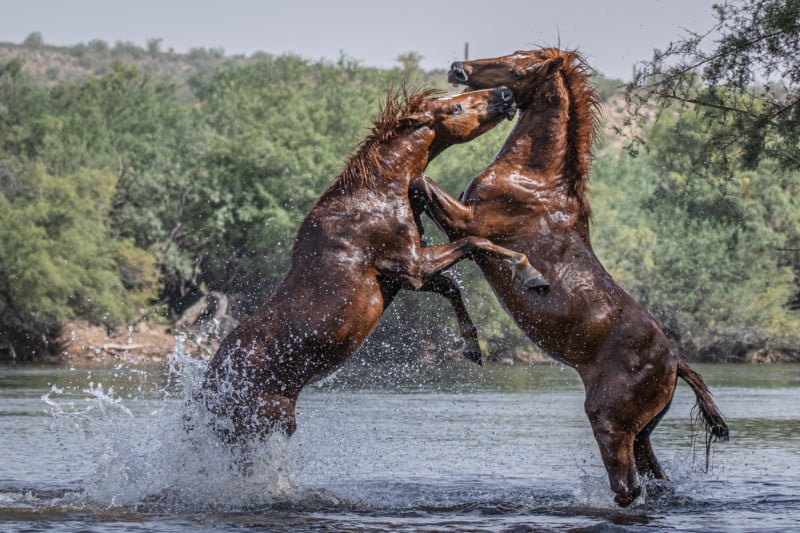
Capturing wild horses is no easy feat. But one photographer has spent seven years perfecting her craft, shooting beautiful photos of the majestic creatures.
Susan Goudge dodges rattlesnakes and deals with the intense Arizona heat to capture wild horses running, fighting, and loving.
“Being a wild horse photographer gives me a reason to get outside and enjoy nature while doing something I love,” she tells PetaPixel.
“Being with the horses and watching their interaction with one another is magical, and I learn something new every time I’m out with them.”
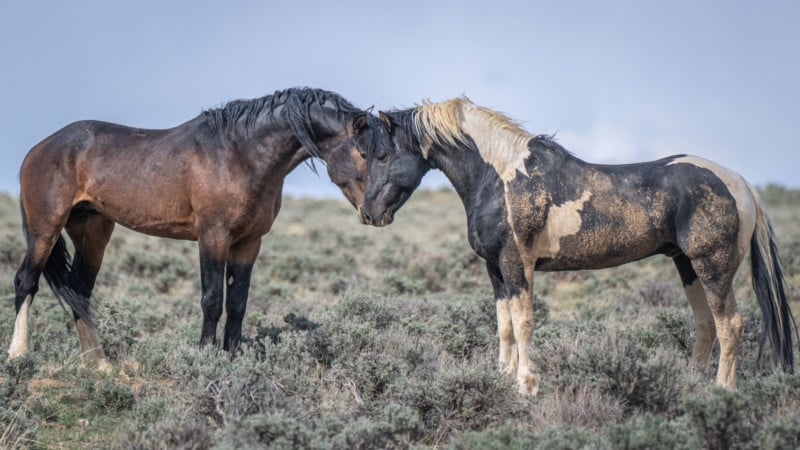
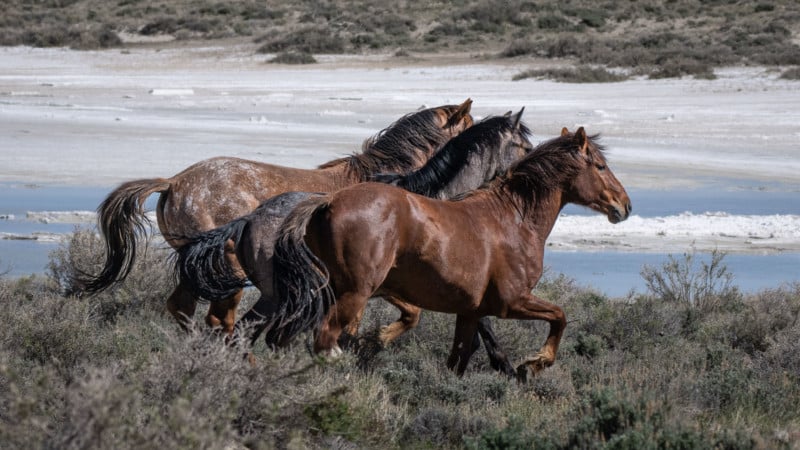
Goudge became interested in wild horses after moving to Arizona where she discovered they lived along the Salt River.
“I was intrigued, and began learning all I could about them, and how and where to see them,” she says.
“Along the way, I met other wild horse photographers, who shared their knowledge with me, and I soon became hooked.”
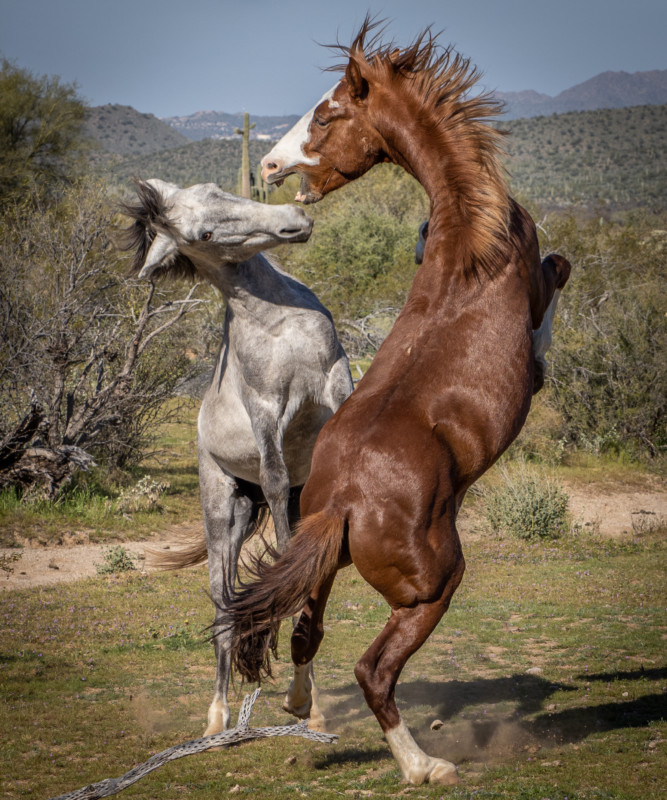
Goudge says that respect for the horses is a must and so is giving them plenty of space, making a long lens essential.
“One of the first pieces of advice I was given was to stay behind a tree if possible, especially if the horses are sparring, and it’s been good advice,” she explains.
“I just want to observe and photograph them without disrupting them, as any ethical wildlife photographer does with the animals she’s shooting; I can spend hours just watching and photographing them, and it is fascinating.”
Getting a Good Shot
Goudge uses a Sony A1 or A9 with either a 100-400mm or a 200-600mm to capture her photos but she tries to travel light.
“Since I am often hiking three to five miles during a photo shoot, I only carry one body and one lens, due to the weight,” she says.
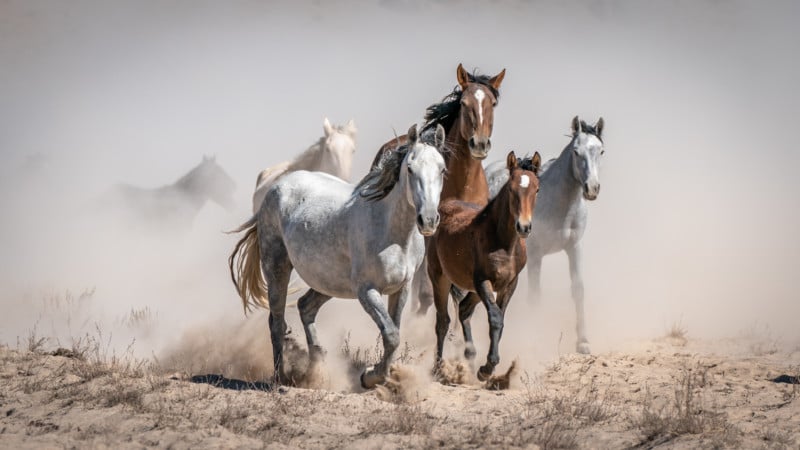
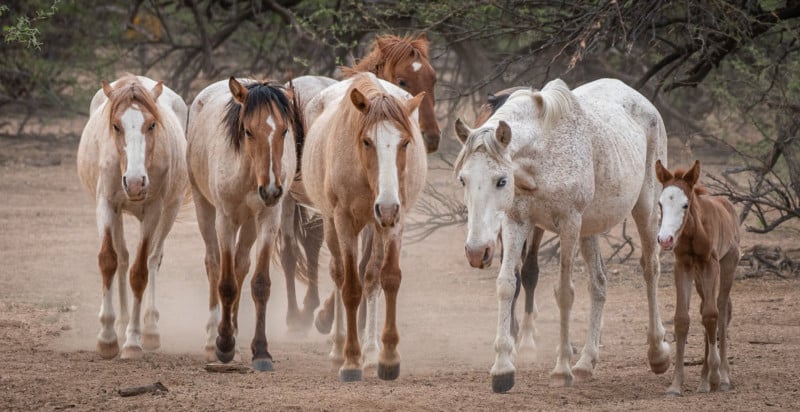
Goudge has to climb up rocky hillsides, duck under trees, walk through cobwebs, wade through rivers, and avoid rattlesnakes to get a good shot.
“It’s helpful to have a high clearance, four-wheel drive vehicle since you often have to search for the horses on two-tracks,” she explains.
“Binoculars are also a must, since the horses can quickly travel great distances, and it may require a bit of searching to find them.”
This summer, Goudge was bitten by a snake while photographing the horses. Fortunately, it was a “dry” bite but she has worn snake guards ever since.
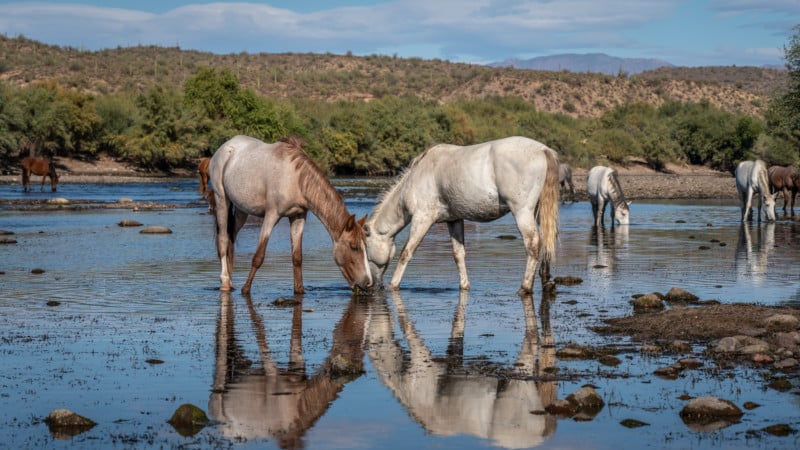
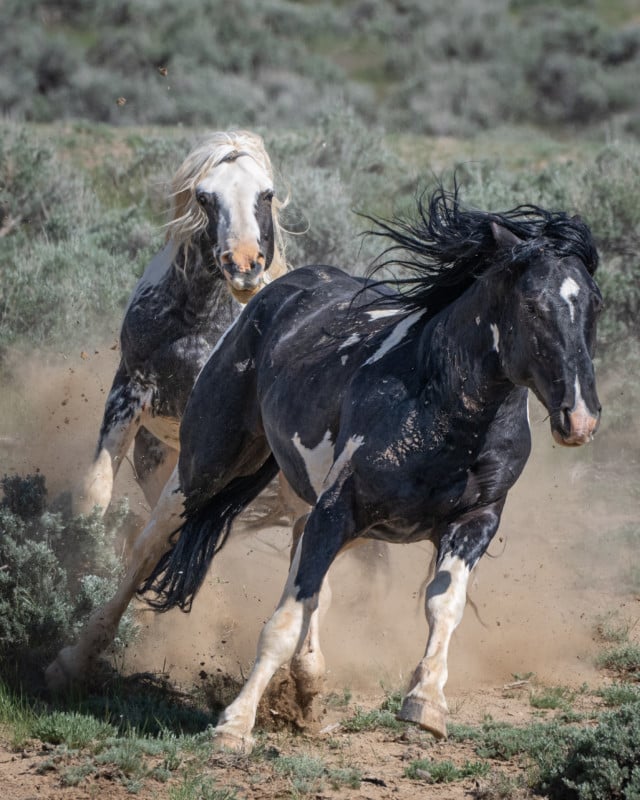
Just like their tame relatives, some wild horses are okay with people around while others are not.
“Finding the horses, and then getting close enough to photograph them without disturbing them, is part of the challenge of photographing wild horses,” explains Goudge.
“Understanding their behavior will also help you prepare for a shot.” Goudge gives an example of a band of horses heading toward a water source.
“You have to hope you’ve guessed the right water hole to go to to get the dramatic shot of hundreds of horses running for water, enveloped in clouds of dust,” she says.
“Some days you guess correctly, other days you sit waiting for them to crest a hill only to find they’ve gone in another direction.”
Goudge says that she hopes her photos help people understand the complex social networks that wild horses have.
“The high action moments, such as horses sparring or running, certainly get your adrenaline pumping while photographing them, but it is the tender moments, such as a mare loving her foal, or two stallions who are old friends greeting one another, that stay with you and pull at your heartstrings,” she adds.
More of Goudge’s work can be found on her Instagram.
Image credits: All photos by Susan Goudge.